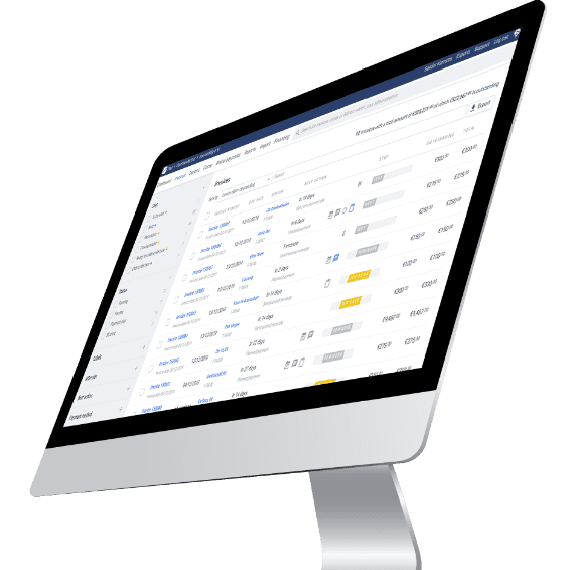Step-by-step plan for unpaid invoices
Are there any outstanding invoices from customers? Encourage the customer to pay by following the step-by-step plan below.
1. Contact your relations by telephone
It depends on the relationship with your customer whether it is useful to call first. This is a good option, for example, if the debtor normally always pays on time. Contacting the debtor by telephone is a personal approach. Explain beforehand that the invoice is still outstanding and that you will call to ask whether there is a reason why the invoice has not yet been paid. It may happen that the invoice has been forgotten.
2. Mail a payment reminder
Send a payment reminder email immediately after the payment deadline. This is a friendly way of reminding the debtor that an amount is still outstanding. It should also be noted that the statutory interest rate applies in the event of non-payment.
3. Send a second reminder or demand for payment
There are companies that first send a second reminder, but it is also possible to send a reminder. The name ‘reminder’ indicates that measures will be taken if payment is not forthcoming. Incidentally, it is compulsory to send a payment reminder to consumers, but not to businesses. It is, however, a good idea to send business relations a reminder as well.
Exhortation:
Refer in the reminder to the delivery and to the invoice, but also to the earlier payment reminder and set a payment term of fourteen days (consumers). Mention any collection costs to be borne by the debtor and further legal action if a reminder is not forthcoming. It is advisable to send the reminder by registered post in order to have proof of payment. However, it is also possible to send it by email.
Read more about when to send a payment reminder.
4. Claim legal interest and charge collection costs
When an invoice is not paid, as an entrepreneur, you are entitled to claim legal interest and to charge collection costs. These costs relate to the costs you incur because a debtor fails to pay an invoice. The legal interest is established by law as the interest that can be claimed when a debtor is in arrears.
5. Agree on a payment schedule
Agreeing on a payment schedule may offer a solution for getting the invoice paid after all, but in instalments. It depends on the situation whether it is useful to agree on a payment schedule. If you suspect that the customer will not pay anyway and the payment arrangement is in fact a further postponement of subsequent measures, skip this step.
6. Switch to an amicable collection process
Have you tried everything to get the invoice paid and still have not received anything? In that case, Payt can serve as a collection label. You do not outsource your debtor management, but you retain control over the process. In this process, your customer will be charged collection fees and there will - for the first time - be communication with the Payt logo. This way, your file remains complete, including all correspondence that has been exchanged between you and your customer since the first invoice. You will receive the collection costs charged to your customer directly on your own account. To preserve the customer relationship, you could even choose not to charge them if the customer pays the principal sum after all. You remain in control and you decide. You no longer need a collection agency.
7. See if there are legal means to be used
There are other options available in certain situations by using legal means. For example, if goods have been delivered but not yet paid for. Retrieving these goods may limit the damage. This is possible on the basis of retention of title which must then be included in the general terms and conditions. Another option is the right of complaint. This concerns a legal provision to reclaim goods if they have not been paid for.
8. Reclaiming irrecoverable VAT
When you send invoices, you charge VAT and the VAT received is remitted to the tax authorities. What happens to the VAT you have paid on an invoice that has not yet been paid by the debtor? With a claim that is wholly or partly irrecoverable, you have wrongly paid VAT. This VAT can be reclaimed from the tax authorities.
9. File for bankruptcy of the customer
There is another step to take when invoices are not paid by a customer. In this case, if the conditions are met, it is possible to file for bankruptcy of the customer. If the company has already been declared bankrupt and therefore invoices remain unpaid, it is important to submit the claim to the receiver.
10. Minimise the risks of non-payment from now on
Did you go through the step-by-step plan? It has cost you time. If, in the future, you want to get your invoices paid quickly and more efficiently, there are several options available to you. First and foremost, it is important to get the accounts receivable management under control. This means that you need to spend time on following up invoices. Payt offers an automated solution for debtor management with follow-up of invoices that takes work and time out of your hands.
Ready to get Payt? Try for free*
- Get paid 30% faster on average
- Follow up an invoice fully automatically and stay in complete control of the process
- Leave more time for the customer relationship
Schedule a custom online demo »

